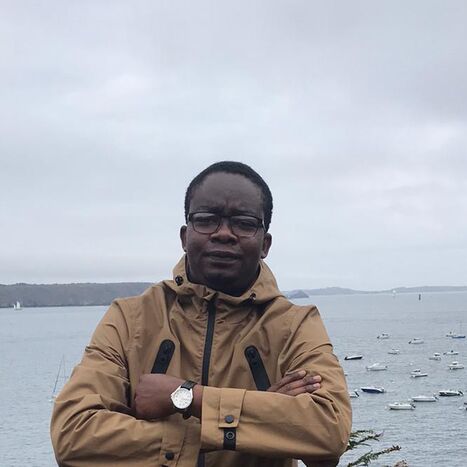Project 01: Full-depth temperature and salinity contribution to regional sea level changes in the north Atlantic subpolar gyre over 2002-2018 based on repeated hydrographic transects
Authors: Odilon J. Houndegnonto, W. Llovel and D. Desbruyères
The Subpolar North Atlantic (SPNA) plays a fundamental role in the large-scale redistribution of physical and biogeochemical properties (e.g. heat, freshwater, carbon) within the ocean interior, and is therefore a key actor of the Earth climate system. It undergoes pronounced ocean heat content (OHC) variability on a wide range of temporal scales and over significant depth ranges. The SPNA notably stands out of the global picture of upper OHC trends during 1993-2019 with a significant and unique cooling pattern. This cooling patterns is also visible from satellite altimetry data recording sea level changes. Salinity can also enhance or reduce temperature changes in terms of sea level. However, salinity observations are sparse especially for the deep ocean (below 2000m) and is still uncertain. For those reasons, we focus our study on evaluating the respective contribution of full-depth temperature and salinity data on sea level change over the SPNA. We consider a combination of 9 biennial summer occupations of the Portugal-Greenland A25-OVIDE transect and 9 concomitant occupations of the Greenland-Labrador AR7W transect over 2002-2018. The raw ship-based hydrography data consist of T/S profiles from the surface to the near sea-floor (0.002 °C and 0.002 PSS-78 accuracy, respectively), spaced out by a few tens of nautical miles in the interior and a few nautical miles above continental slopes, and with vertical resolution of a few meters. After optimal interpolation on a regular distance- depth grid, those data will provide high-resolution pictures of the large-scale temperature and salinity contributions to regional sea level changes.
Project 02: On the formation of thermohaline stepped stratification around the Congo River plume
Authors: Houndegnonto, O. J., Kolodziejczyk, N., Maes, C., Bourlès, B., Dobler, D., Grima, N., Da-Allada, C. Y., & Reul, N
The thermohaline stratification within the ocean superficial layers plays a key role on the air-sea interactions and is a determinant factor for the efficiency of heat flux exchanges and vertical mixing, which have a great implication on climate. In the southeastern Gulf of Guinea, temperature and salinity fields of the ocean surface layers are strongly influenced by the Congo River runoff. The impact of the Congo River plume on the 3-dimensional thermohaline structure of the water column in this region is still poorly documented due to the scarcity of in situ data. Using the recent Sea surface Salinity product from ESA's Climate Change Initiative, and the available in situ and remote sensing measurements and products combined with analyses issued from the ARIANE Lagrangian tool, the impact of the Congo River plume on the thermohaline stratification in the southeastern Gulf of Guinea are presented and analyzed. Typical structures of the thermohaline stratification off Congo are characterized, and the mechanisms controlling the thermohaline layering are investigated, with a focus on the stepped thermohaline stratification above the main thermocline. We found that the water masses under the influence of the Congo River plume are associated with a strong halocline of about 6.5pss within the top layer of 0-15m depth. The large scale dynamics of the plume generate SSS and SST fronts which are associated with doubly stable stepped thermohaline vertical structures, with interface gradients of 2pss and -0.6°C. Our findings suggest that stepped thermohaline stratification could be formed by strong shear of surface currents enhanced by a cross flow dynamics between the surface Ekman flow characterizing the large scale Congo River plume, and the subsurface geostrophic flow within the underling subtropical water masses. A Lagrangian analysis demonstrates the northwestward dynamics of the Congo freshwater plume and its implication in the halocline interface formation.
Project 03: Interannual variability of Sea surface salinity under the influence of the Congo River plume
Authors: Houndegnonto, O. J., Kolodziejczyk, N., Maes, C., Bourlès, B. and Reul, N
